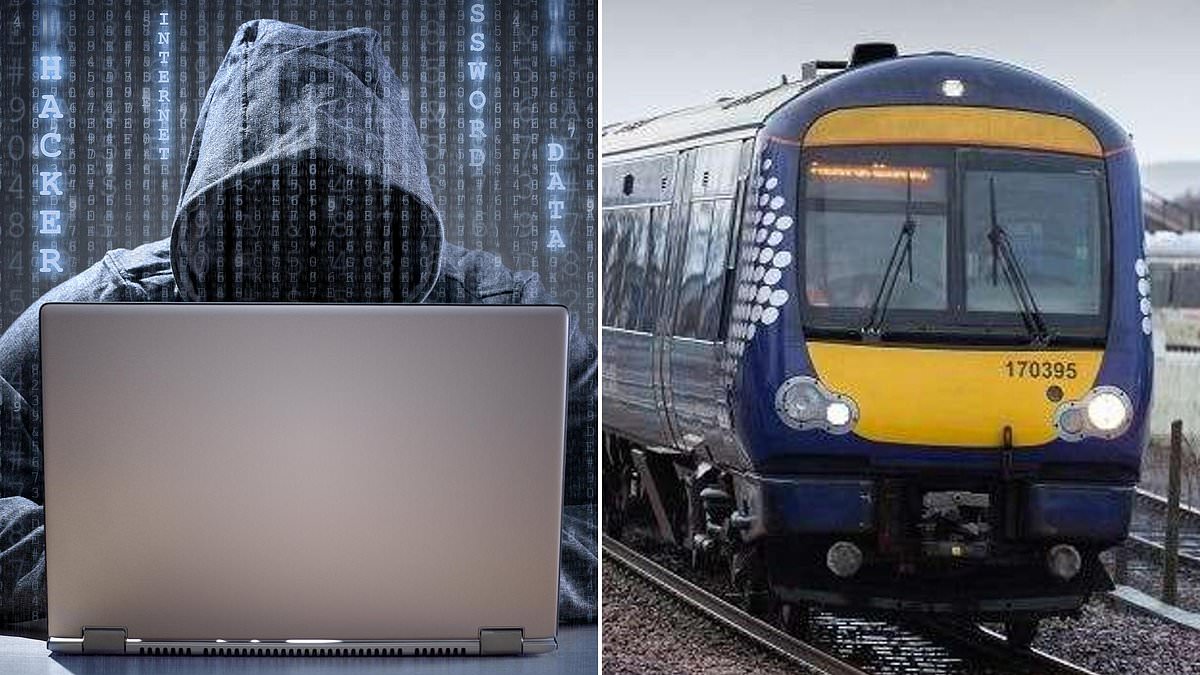Scotland’s rail network is vulnerable to cyber-hacking and ‘unequipped’ for the transition to digitally-controlled signalling, Network Rail bosses have warned.
The concerns follow a serious cyber security attack on Transport for London (TfL), which runs trains, and buses and London Underground.
TfL is still recovering from the attack in September, which forced it to suspend multiple services and is reported to have cost more than £30million.
The hacking fears follow BBC drama Nightsleeper, featuring an overnight train which is taken over and controlled remotely by hackers – a scenario dismissed by rail chiefs as fiction.
Lynsey Hunter, who is in charge of signalling in Scotland for Network Rail – the UK Government body which runs the rail network – told a recent Rail Industry Association conference at the University of Strathclyde in Glasgow: ‘My discipline is moving from mechanical signals into the networking world very quickly, and Network Rail is wholly, in my view, unequipped to deal with that transition.
‘There’s some very real possibilities with cybersecurity and we are not ready for that.’
Ms Hunter, regional asset manager (signalling) for Network Rail in Scotland, said: ‘I am really hoping that [Network Rail’s chief technology officer] Robert [Ampomah] is going to be able to tell me about the plans he has got to manage cyber security and to put us in a position where we’ve got the knowledge to be able to manage it, because right now, certainly within Scotland, we don’t, as far as I can see.’
Mr Ampomah said: ‘We recognise that it is a threat, never mind the fictional [Nightsleeper], it’s a reality.
‘We only have to look at incidents like TfL suffered recently.
‘That absolutely devastated a lot of our systems they use and they are only just getting back up and running. So cyber security is definitely a very big threat.
‘Within Network Rail, we have a very – I’ll touch wood as I say it – a relatively secure cybersecurity system.’
In September, Glasgow Central and Edinburgh Waverley were among stations operated by Network Rail that were hit by a cyber attack in which the Wi-Fi landing page was replaced with messaging about terror attacks.
UK Department for Transport director general for rail services Alex Hynes, a former managing director of Scotland’s Railway, which comprises Network Rail Scotland and ScotRail, has told the Commons transport committee that ‘cyber risk is up there on our risk register, and the department works with the industry on managing those risks’.
Network Rail in Scotland is devising a new signalling strategy that will set out how it plans to replace remaining mechanical signal boxes with digital controls.
While much of the rail network across the Central Belt is controlled by large signalling centres in Glasgow and Edinburgh, several rural lines are still operated using Victorian technology involving lineside semaphore signals rather than colour lights.
The signals are changed using large metal levers in signal boxes, where staff still communicate with those in neighbouring boxes by tapping out Morse Code-like ‘bell codes’.
A Network Rail spokesman said: ‘The critical systems that run our railway and keep it safe are very secure, due to their type of functionality, meaning that there is no connection to the outside digital world.
‘As we continue to invest, upgrade and utilise more digital systems across our network, cyber security is at the heart of the design, as we learn lessons from railways across the globe.
‘The events and storyline in Nightsleeper are purely fictional and bear no relation to real-life.
‘Our railway, while aided by computers, is actually controlled manually – by drivers in cabs and signallers in signal boxes.’
